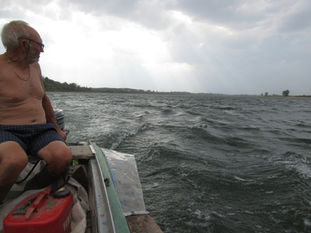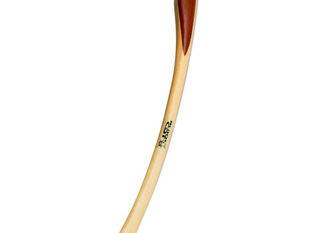
While the jackals never crossed the red line prohibiting stealing from the tent, there were other neighbours who were far from such noble thoughts. From the smaller creatures, the most loud and persistent were the rats. Mice followed not far behind.
For about a week after putting up the old army tent, there would be peace and quiet. By about mid-May, the bliss ended. From there on until the last days in camp, the marauding army would be invading the tent and ransacking it all through the night. Peace there would be no more and not a crumb of food would be safe.
Rats
They were of two kinds: those who came from above, and those from below.
The vanguard was formed by tree-climbing rats with long tails. They lived in the trees all around the camp. Officially, they are known as Black rats (Rattus rattus)
Fig. 1. A Black rat
Once darkness fell, the Black rats would come down from their trees and begin ransacking the tent and all food in reach. Luckily, they did not touch meat, and, surprisingly – cheese. That was the good news. The bad was that all vegetables were in danger. Unless placed in the small fridge my father had, or put into containers with tight-fitting lids, vegetables quickly disappeared. There was also a passion for kitchen-paper, paper napkins, and in fact, paper in any form. The material went for lining nests.
That was from above. But havoc came also from below. Its authors were the bigger Brown rats (Rattus norvegicus). With them cheese and bread were in grave danger. The rearguard was represented by Field mice (Apodemus agrarius). With all these rodents, pots and pans rattled all night long. On the positive side, this somewhat muffled the attacking whine of mosquitoes.
Delongi and others on the long side
The rodents had a formidable enemy in the two-metre-long form of an old grass-snake (Aesculapian snake, Zamenis longissimus). My father knew her from many years back and called her Delongi. Village people also knew her (cross.-ref.). The old lady lived in the roots of a poplar tree under whose boughs the tent sought shade.
At night, my father would hear Delongi come out of her lair and go for the rats. The trouble was that once she caught a rat – an event announced by piercing screams and the rattling of Delongi’s tail against the cutlery – she would crawl back into her lair and sleep for a week.


At times Delongi would go for the lizards which tried to make themselves invisible on the canvas of the tent.


Speedy
A more energetic enemy of the rodents was the nimble weasel (Mustela erminea), Speedy. Unlike Delongi, she was never tired of killing rats. She would take them even in broad daylight:



All the various efforts of their deadly enemies did not lead to diminishing the rodent-pressure on the tent. The din and rattle of rats exploring every nook, of fighting between themselves, or of predators attacking them, never stopped. Curiously, the jackals did not take any part in all this. It was summer, there was plenty of food, and they were not bothered. Winter was still far away.
People from the village suggested using rat-poison. My father was against such violent measures. He preferred letting everything be. In return, he was blessed with the spectacular clouds of Danube sunsets.







